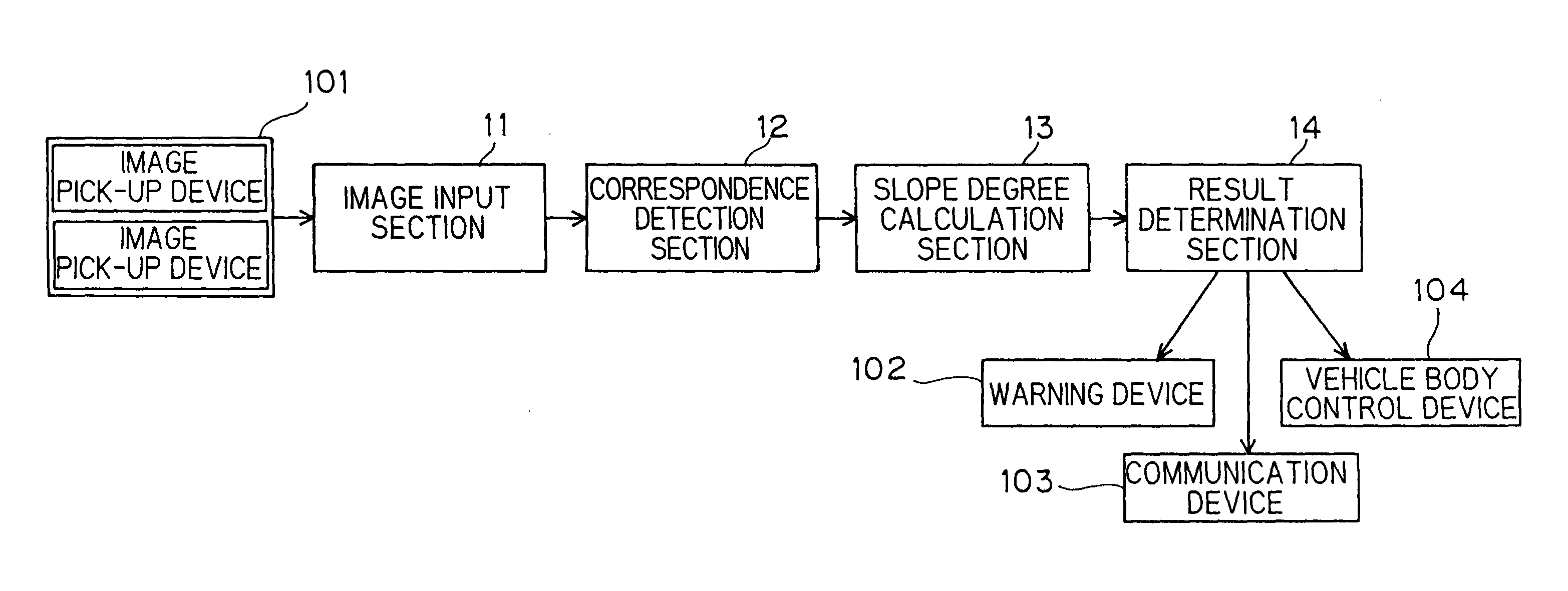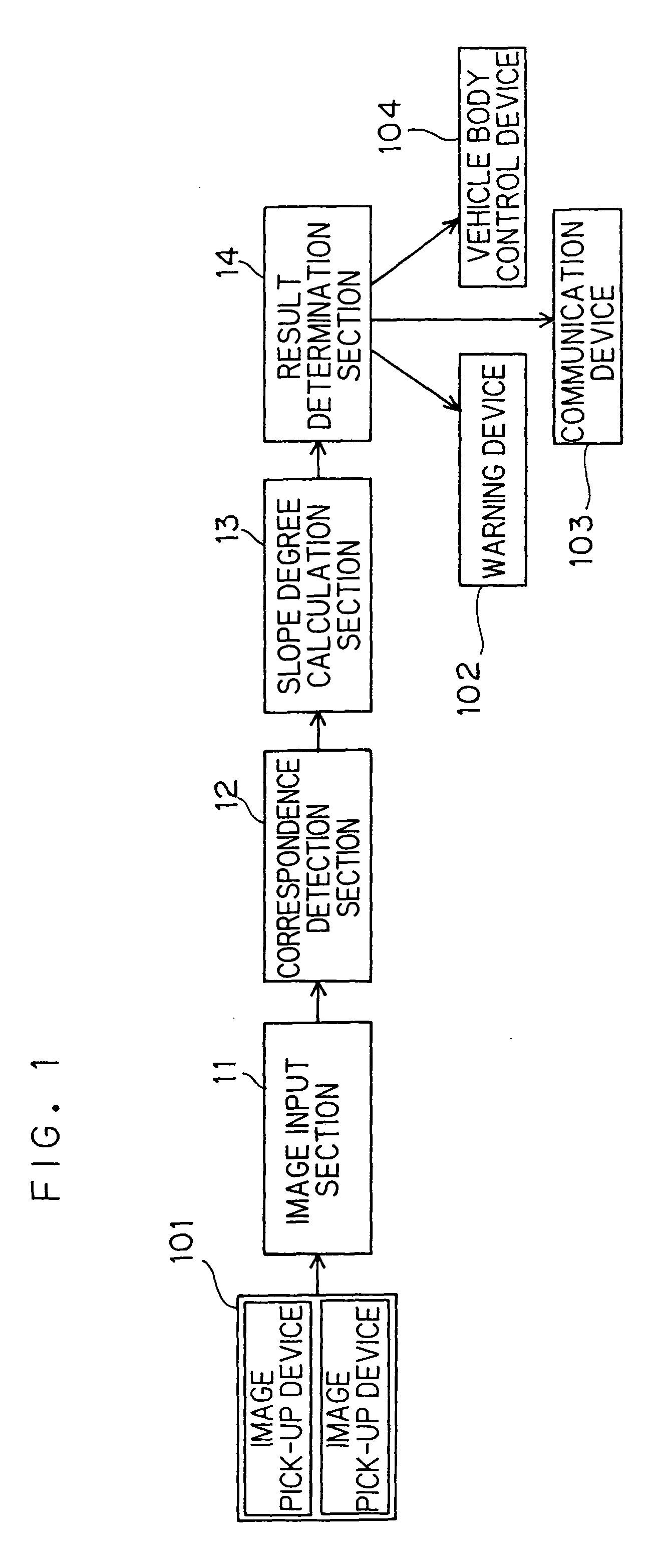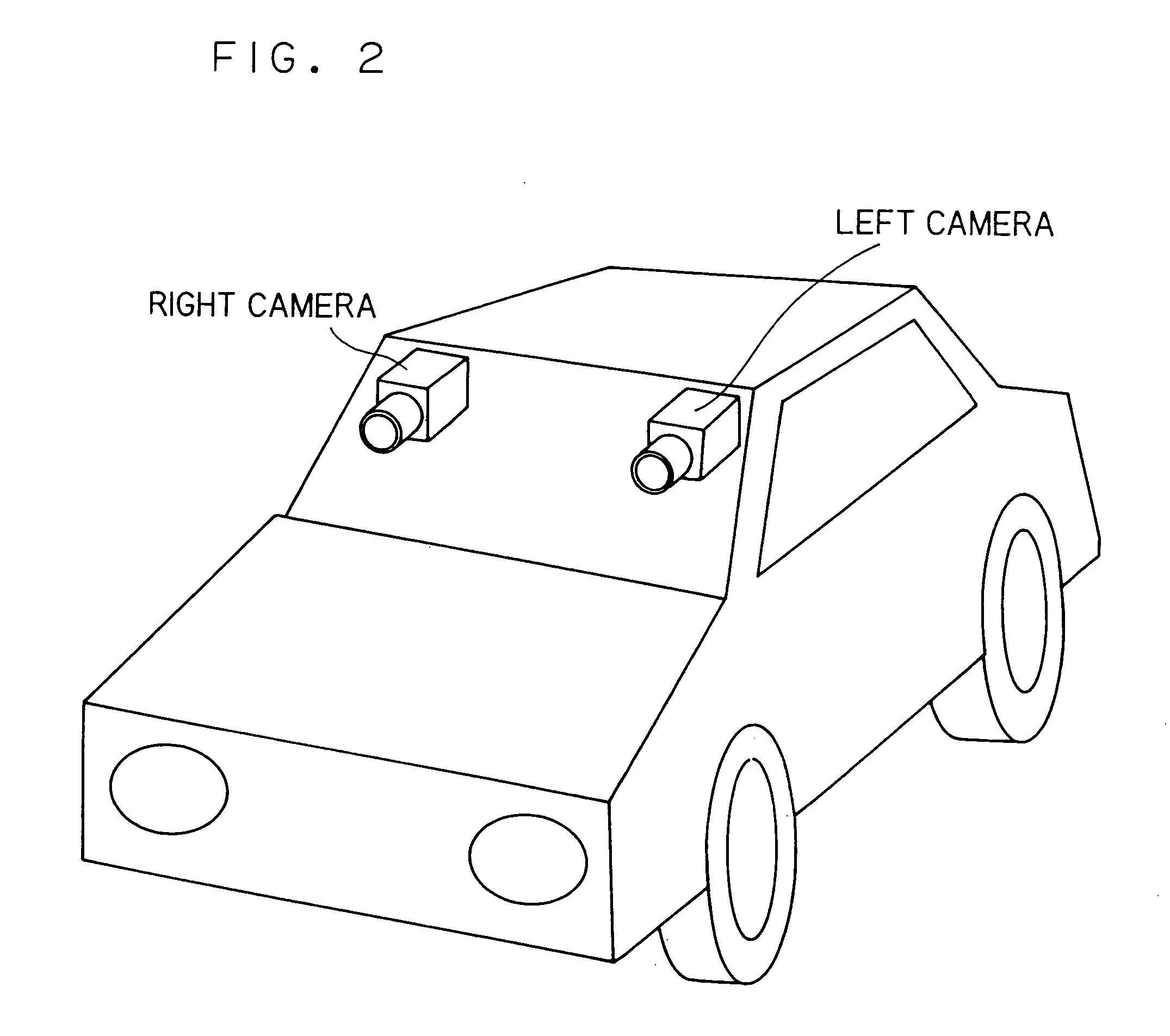Obstacle detection device and method therefor
a detection device and obstruction technology, applied in image enhancement, scene recognition, instruments, etc., can solve the problems of low detection resolution, insufficient measurement range, and erroneous detection of non-objective objects
- Summary
- Abstract
- Description
- Claims
- Application Information
AI Technical Summary
Problems solved by technology
Method used
Image
Examples
modification example 2
[0142] In the above, the detection regions R and R' are predetermined in the right and left camera images. Alternatively, such an obstacle detection method as described in Patent Literature 3 (JP-A-2001-154569) may be used for a preprocessing, and a result derived thereby may be used to set detection regions. To set detection regions, some driving lane detection method may be used, and a result derived thereby may be used under a predetermined method.
modification example 3
[0143] Even if no detection region is set in advance, the right and left camera images may be scanned, and at each scanning position, the operation of the embodiment may be executed for a similar object detection process.
modification example 4
[0144] In the present embodiment, the equation 10 and other between-image relational expressions and drawings are provided for conversion from the right image region to the left image region. Those are not surely restrictive, and all allow conversion from the left image to the right image.
PUM
 Login to View More
Login to View More Abstract
Description
Claims
Application Information
 Login to View More
Login to View More - R&D
- Intellectual Property
- Life Sciences
- Materials
- Tech Scout
- Unparalleled Data Quality
- Higher Quality Content
- 60% Fewer Hallucinations
Browse by: Latest US Patents, China's latest patents, Technical Efficacy Thesaurus, Application Domain, Technology Topic, Popular Technical Reports.
© 2025 PatSnap. All rights reserved.Legal|Privacy policy|Modern Slavery Act Transparency Statement|Sitemap|About US| Contact US: help@patsnap.com



